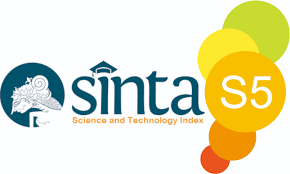Implementation of Blockchain in Minimizing Tax Avoidance of Cryptocurrency Transaction in Indonesia
DOI:
https://doi.org/10.34010/injuratech.v2i1.6568Keywords:
Cryptocurrency, Transaction, Blockchain, Tax AvoidanceAbstract
The purpose of this research is to determine the potential risk of tax losses caused by cryptocurrencies, to identify miners and cryptocurrency users, and to formulate a tax avoidance countermeasure strategy related to cryptocurrency transactions. This study uses qualitative research methods with literature study techniques. The type of data used in the form of textual includes definitions, concepts and arguments contained in the literature relevant to the research problem. The data used are primary data sourced from research articles from journals, and secondary data sourced from supporting documents. The data reduction and data analysis process include data display and content analysis. The results of this research show that the implementation of blockchain technology in the Indonesian tax system is a database integration model that can solve the problems of the underground economy in cryptocurrency transactions. The reason for the results of this study is that regulation of cryptocurrency transactions into the realm of regulation can be done through vertical regulation of the blockchain market, with a sectoral approach. The impact of the results of this study can be the basis for formulating tax policies related to cryptocurrency transactions by utilizing blockchain technology.
References
[2] Anessa, A. S. (2020). What’s the Big Deal About Blockchain?. Florida Bar Journal. 94(2), 42.
[3] Baudoncq, M. & Baugniet, F. W. J. (2019). Belgium. Global Legal Insights – Blockchain & Cryptocurrency Regulation. First Edition, 198-208.
[4] Borg, F. J. & Schembri, T. (2019). The Regulation of Blockchain Technology. Global Legal Insights – Blockchain & Cryptocurrency Regulation. First Edition, 188 -192.
[5] CoFTRA Regulation Number 5. (2019). Investasi Cryptocurrency. Peraturan Bappebti No. 5 Tahun 2019.
[6] Debi Putri Dkk. (2021). Analysis Of Potential and Risks Investing in Financial Instruments and Digital Cryptocurrency Assets During the Covid-19 Pandemic. Jurnal SEKURITAS (Saham, Ekonomi, Keuangan Dan Investasi). 5(1).
[7] Erdinc, Z. (2016). The Reasons of Underground Economy, Its Results, Methods and the Turkish Case. Journal of Business and Economic Policy. 3(1), 15-21.
[8] European Banking Authority (EBA). (2014). EBA Opinion on ‘Virtual Currencies’. EBA/Op/2014/08. 4 July 2014. Retrieved From: https://www.eba.europa.eu/sites/default/documents/files/documents/10180/657547/81409b94-4222-45d7-ba3b-7deb5863ab57/EBA-Op-2014-08%20Opinion%20on%20Virtual%20Currencies.pdf?retry=1
[9] European Central Bank (ECB). (2012). Virtual Currency Schemes. Eurosystem Oktober 2012. ISBN: 978-92-899-0862-7 (online) Retrieved From: https://www.ecb.europa.eu/pub/pdf/other/virtualcurrencyschemes201210en.pdf
[10] Fanusie J. Y & Robinson, T. (2018). Bitcoin Laundering, An Analysis of illicit Flows into Digital Currency Services. Elliptic. Center on Sanctions & Illicit Finance. Retrieved From: https://cdn2.hubspot.net/hubfs/3883533/downloads/Bitcoin%20Laundering.pdf
[11] Financial Action task Force (FATF). (2014). FATF Report, Virtual Currencies Key Definitions and Potentiap AML/CFT Risks. Retrieved From: https://www.fatf-gafi.org/media/fatf/documents/reports/Virtual-currency-key-definitions-and-potential-aml-cft-risks.pdf
[12] FinCEN. (2017). Advisory to Financial Institutions and Real Estate Firms and Professionals. Retrieved From: https://www.fincen.gov/sites/default/files/advisory/2017-08-22/Risk%20in%20Real%20Estate%20Advisory_FINAL%20508%20Tuesday%20%28002%29.pdf
[13] Goldman, N & Lewellen, C. (2021). Behind Bitcoin-A Closer Look at the tax Implications of Cryptocurrency. Retrieved From: https://poole.ncsu.edu/thought-leadership/article/behind-bitcoin-a-closer-look-at-the-tax-implications-of-cryptocurrency/
[14] Guinot, C. (2018), Manfaat Blockchain dalam Sistem Perpajakan menurut CEO OnlinePajak. https://id.techinasia.com/blockchain-online-pajak
[15] Hassan, M. & Scheider, F. (2016), Size and development of the shadow economies of 157 worldwide countries: Updated and new measures from 1999 to 2013, Journal of Global Economics, 4(3).
[16] Houben, R. (2018). Cryptocurrencies and Blockchain. Legal Context and implications for financial crime, money laundering and tax evasion. TAX3 Committee. Retrieved From: https://www.europarl.europa.eu/cmsdata/150761/TAX3%20Study%20on%20cryptocurrencies%20and%20blockchain.pdf.
[17] IRS Notice (2014), 21, Q-1. Retrieved From: https://www.irs.gov/pub/irs-drop/n-14-21.pdf. IRS FAQ on Virtual Currency Transactions, FAQ 2, https://www.irs.gov/individuals/international-taxpayers/frequently-asked-questions-on-virtual-currency-transactions.
[18] Law of the republic Indonesia Number 7/2011 on The Currency
[19] Medina, L. & Schneider, F. (2018). Shadow Economies Around the World: What Did We Learn Over the Last 20 Years?. IMF Working Paper. WP/18/17.
[20] Lexy J. Moleong. (2000). Metodologi Penelitian Kualitatif, Bandung: PT Remaja Posdakarya
[21] Marsh, B. & Dewey, J (2019). The Loan Market, Blockchain, And Smart Contracts: The Potential for Transformative Change. Global Legal
[22] Moore, G. (2021). IRS Watch Contributor Group, Operation Hidden Treasure is Here: If You Have Unreported Crypto, Get Legal Advice, Forbes. Retrieved Form: https://www.forbes.com/sites/irswatch/2021/03/06/operation-hidden-treasure-is-here-if-you-have-unreported-crypto-its-time-to-get-legal-advice/?sh=4ef50cbc39c9
[23] Moreno, J. M. D., Marval, S. E. L. O’Farell, & Mairal. (2019). Argentina. Global Legal Insights – Blockchain & Cryptocurrency Regulation. First Edition (193-197).
[24] Poskriakov, F., Chiriaeva M. Lenz C. C., Staehelin. (2019). Cryptocurrency Compliance and Risks: A European KYC/ AML Perspective. Global Legal Insights – Blockchain & Cryptocurrency Regulation. First Edition (198 -208)
[25] Rager. (2020). The Intersection of Cryptocurrencies and Individual Taxation. Retrieved From: https://www.cohencpa.com/insights/articles/the-intersection-of-cryptocurrencies
[26] Rath, U. & Kulnig T. (2019). Austria. Global Legal Insights – Blockchain & Cryptocurrency Regulation. First Edition (198-208)
[27] Reeves, P. & Gilbert G. W. (2019). Australia. Global Legal Insights – Blockchain & Cryptocurrency Regulation. First Edition (198 -208)
[28] Brown, R. G. (2019). Distributed Ledger Technology: Beyond Block Chain. A Report By The UK Government Chief Scientific Adviser. Government Office for Science.
[29] SDNs, IMF (2021). Staff Discussion Note Virtual Currencies and Beyond: Initial Considerations. Retrieved From: https://www.imf.org/external/pubs/ft/sdn/2016/sdn1603.pdf, 27.
[30] Sasse, M. A. Danezis, G. & Meiklejohn, S. (2019). Distributed Ledger Technology: Beyond Block Chain. A report by the UK Government Chief Scientific Adviser. Government Office for Science.
[31] Taylor, S. (2019). Distributed Ledger Technology: Beyond Blockchain. A Report by the UK Government Chief Scientific Adviser. Government Office for Science.
[32] Sugiyono. (2011). Metode Penelitian Kuantitatif Kualitatif dan R&D. Alfabeta.
[33] Weinstein J., Cohn A., & Parker C., (2019). Promoting innovation through education: The blockchain industry, law enforcement and regulators work towards a common goal. Global Legal Insights – Blockchain & Cryptocurrency Regulation First Edition (1-3)
[34] Williams, C. C. & Schneider, F. (2016). Measuring the Global Shadow Economy: The Prevalence of Informal Work and Labour. Edward Elgar Publishing, UK.
[35] World Bank Group (WBG). (2017). Distributed Ledger Technology (DLT) and Blockchain”. FinTech Note (1).
[36] Zed, M. (2014). Metode Penelitian Kepustakaan. Jakarta: Yayasan Obor Indonesia.












